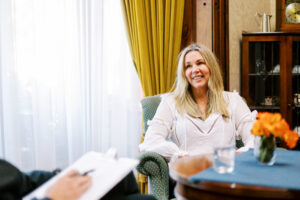In Pastor Darryl Eyb’s ‘3 Freeing Words for the Shamed,’ he provides a clear explanation of guilt and shame and explains how can be set free.
I woke up this morning with a familiar feeling. I want to close my eyes, roll over and go back to sleep, but I knew I couldn’t. It was time to face myself – I feel like a failure. I haven’t done anything wrong and yet I’m sinking in shame. What’s wrong with me?
The Difference Between Guilt and Shame
Guilt and shame are words that so often used together that they are hard to distinguish however it is important to see the differences. Guilt creates the fear that our wrongs will be discovered. It is the result of doing bad.
Shame makes you believe you are bad. Shame goes beyond actions, and identifies someone. The fear it creates is that someone will see me for who I really am, or at least who I believe I am. It is this fear of exposure, even makes shame so difficult to carry.
Guilt is a bit like carrying a heavy backpack. It weighs you down, and even cripples you, but you can take off a backpack. We can repent and seek forgiveness. Shame is more like being a hunchback – it’s part of you. You can cover it, or try to stand straighter. Attacking it with a chainsaw seems like the only way to remove the hunch of shame. And the worst thing is, a shamed person may not even have a hunch but because they believe they do, will do anything to stop others seeing it!
Mark Meynell describes the effects of shame in his book When Darkness Seems My Closest Friend:
‘Shame leaves us with the terror of exposure. This is what generates the desire to cover up and remain undisturbed. It is precisely because exposure is the biggest threat for the shamed that nakedness is such a potent symbol for it. This is not the supposedly alluring nudity of the pornographic, but the cowering nakedness of the vulnerable. The shamed don’t just want clothes; they want total invisibility.’1
Peter: A Portrait of Shame
Peter knew what shame’s claws felt like. He followed as Jesus was hauled from one trial to another. I imagine he’s there to offer some support and keep track of events. Yet he flees grief-stricken and covered in shame. Mark Meynell captures the scene beautifully.
‘He is in the heart of enemy territory, though. Standing around the warming fire in the high priest’s courtyard, Peter is asked by three separate people if he was acquainted with the man under arrest. Three times he claims he is not, with what seems like growing desperation. But then, just as the cock crows, Luke includes a detail overlooked by the other Gospel writers: ‘The Lord turned and looked straight at Peter. Then Peter remembered the word the Lord had spoken to him’ (Luke 22:61).
Peter and Jesus – face to face, albeit in highly stressful circumstances. Presumably, Jesus was being escorted out by guards at that precise moment, or could see the courtyard from inside the house. Face to face. Here’s the thought experiment: what was the expression on Jesus’ face as he looked at Peter?
Anger?
Disappointment?
Despair?
It is speculative, of course – but I am confident that it was none of these. It goes back to why Jesus predicted Peter’s failure in the first place. His reasons are clear: ‘Simon, Simon, Satan has asked to sift all of you as wheat. But I have prayed for you, Simon that your faith may not fail. And when you have turned back, strengthen your brothers’ (Luke 22:31-32).
Jesus knew what would happen; more to the point, he knew exactly what Peter was like. And yet he still had a job for him. So what was the expression on Jesus’ face? Love. It had to be. Love and acceptance.
No wonder Peter ran out sobbing. The agony and the shame of it. To begin with, that face of love made it so much worse. But I have no doubt that he remembered it for the rest of his life – especially when he slipped up or failed. A love that knows us and our nature – and is still interested. He perseveres with us. Such is the overwhelming wonder of God’s grace, the only true catalyst for change for the shamed.’2
3 Freeing Words for the Shamed
Love. Acceptance. Grace. Can there be 3 freeing words for the shamed that are more powerful? Three words captured in the expression of a man being led toward execution.
Maybe, like Peter, you experience shame because of something you’ve done in the past. Jesus is looking at you with love, acceptance and grace. Maybe you feel shame because someone has wronged you. Jesus still offers love, acceptance and grace. Maybe you feel unworthy. He isn’t someone who rejects. Jesus still reaches out with love, acceptance and grace.
Jesus’ answer to shame doesn’t end with a look. He goes on to the cross. His final words give voice to the look, “It is finished.” Shame finishes at the cross. Jesus’ answer for guilt? “It is finished.” As I wake and feel the talons of failure, I need to stare into the face of Jesus and hear again “It is finished.”
Jesus’ words sum up the look he must have given Peter. They speak love, acceptance and grace. The cross doesn’t merely cover shame, but gets rid of it. Paul understood this. In Romans he wrote:
‘Everyone who believes in him will not be put to shame.’
Revelation carries the thought further. Chapter 21 speaks about a time when Jesus returns to be with his people and make all things new. This includes a new, or redeemed, earth and heaven for everyone who trusts in him. Here’s the entry rules:
‘Nothing impure will ever enter it, nor anyone who does what is shameful or deceitful, but only those whose names are written in the Lamb’s book of life.’
Those burdened by shame need freedom. We need to know Jesus’ unconquerable love. We need to know Jesus’ unwavering acceptance. And we need to know Jesus’ unending grace.
Darryl Eyb – Pastor, Blogger & Speaker – Cornerstone Church.
WEBSITE: https://darryleyb.net/





Have you thought about becoming a qualified counsellor? It’s a great opportunity to learn how you can extend God's love and grace to the hurting out in the community.
For those who would like to enrol in aifc’s accredited Christian counselling courses we have two intakes per year for courses commencing around the following months:
Enrolment Season - opens approximately 2 months prior to our courses commencing. Enrol online here during our enrolment season.
We also offer two modes of study:
A Master of Counselling course was introduced in 2018.